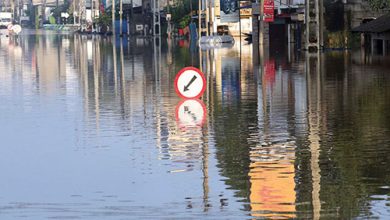WISH YOU WERE HERE
VIETNAMESE WONDER
Rich hues of a capital
Sandip Hor visits a city that was once the capital of unified Vietnam for 143 years

Located on the banks of the Perfume River, Huế was the capital of unified Vietnam from 1802 until 1945 under the rule of the Nguyễn dynasty, which was its last royal clan. Legend has it that the location for seating these royals was chosen on the basis of guidance from scholars of geometry and spirituality.
The winding river (which looked like a snake to them) and surrounding mountains (they resembled lions) were recognised as natural safeguards for the new dynasty’s central hub; and so Huế was born as a royal settlement. Its prosperity progressed for 143 years under 13 Nguyễn emperors but the decline began after the dynasty fell.
Today, the city of nearly half a million people boasts an airport and many other 21st century attributes, presenting a fusion of old and new. That’s the main draw card for the outside world.
WHERE TO STAY Tucked away in the newer part of the city is the 72 room ÊMM Hotel Huế, which offers spacious and well furnished rooms, friendly service and facilities on a par with international standards.
While there’s no shortage of accommodation choices to suit varying tastes and budgets in Huế, this hotel is popular among international tourists because of its proximity to must-see attractions.
WHAT TO EAT Like the rest of Vietnam, Huế is famed for its culinary explosions. Local favourites include bún bò Huế (a soup made with beef and pork broth), bún thịt nướng (a rice noodle dish that’s served cold) and bánh khoái (a savoury pancake topped with pork, shrimp and egg).
The recipes for these delicacies were apparently smuggled out of the former royal kitchens.

WHERE TO SHOP Home to local markets, art galleries and tailoring shops, Huế is a good place to buy authentic handicrafts that include silk paintings, antiques and lacquerware.
WHERE TO GO Highlighting its rich past, the city boasts many royal emblems and religious icons. After establishing Huế as his seat of power, Gia Long – the dynasty’s first emperor – built a citadel as the Imperial City, which is the destination’s main attraction.

Surrounded by six metre high walls and a moat for further protection, the 36 hectare UNESCO World Heritage Site contains several palaces, temples, royal residences and monuments. Some of these were damaged during the Vietnam War but have been restored to their original form.
The most significant building in the Imperial City is the Purple Forbidden City. Mirroring Beijing’s Forbidden City, it was built to be the formal living quarters of the emperors and their immediate families. However, concubines were also allowed on the premises to accompany the royals when necessary.
And the primary entrance to this bastion is through the Ngọ Môn Gate, which faces the flag tower. At the top of this architectural masterpiece are a huge drum and bell, which have witnessed every change in the city for almost 200 years.
Not to be missed are the Nine Dynastic Urns, which once represented the nation’s unity and are now deemed to be the country’s cultural treasures.
After the emperors’ death, their remains were moved to their mausoleums, which are located beyond the city limits and are worth visiting to see how the royals planned for life after death. The architectural ingenuity of the tombs matches the individual tastes of the emperors, and reflects their varying temperaments, philosophies and priorities.
Meanwhile, the mausoleums embody the lives and souls of the Nguyễn emperors, and recount the history of one of Vietnam’s most notable periods that include imperialism, French colonisation, war atrocities and national reunification.
Another major attraction is the seven storey Thiên Mụ Pagoda, which is considered the unofficial symbol of the city.





